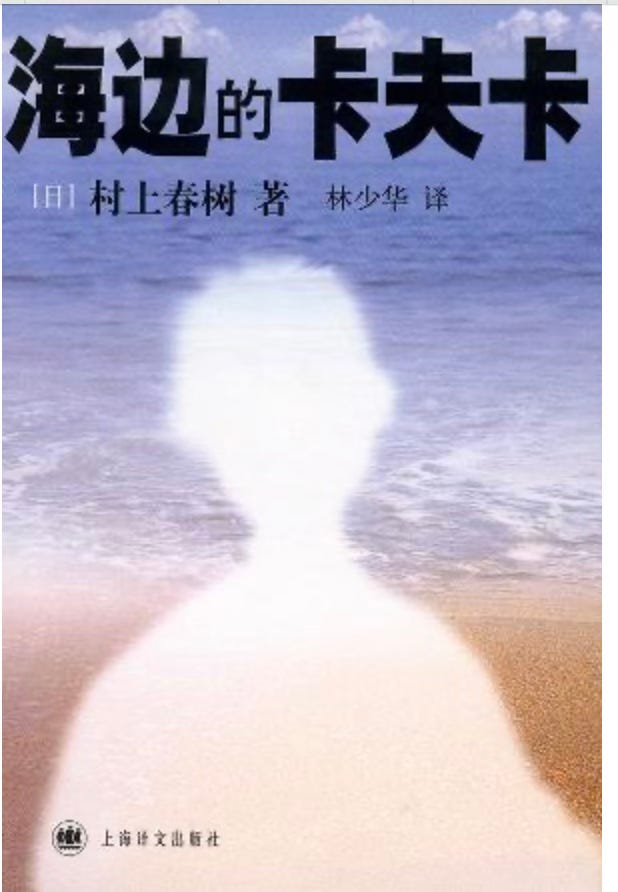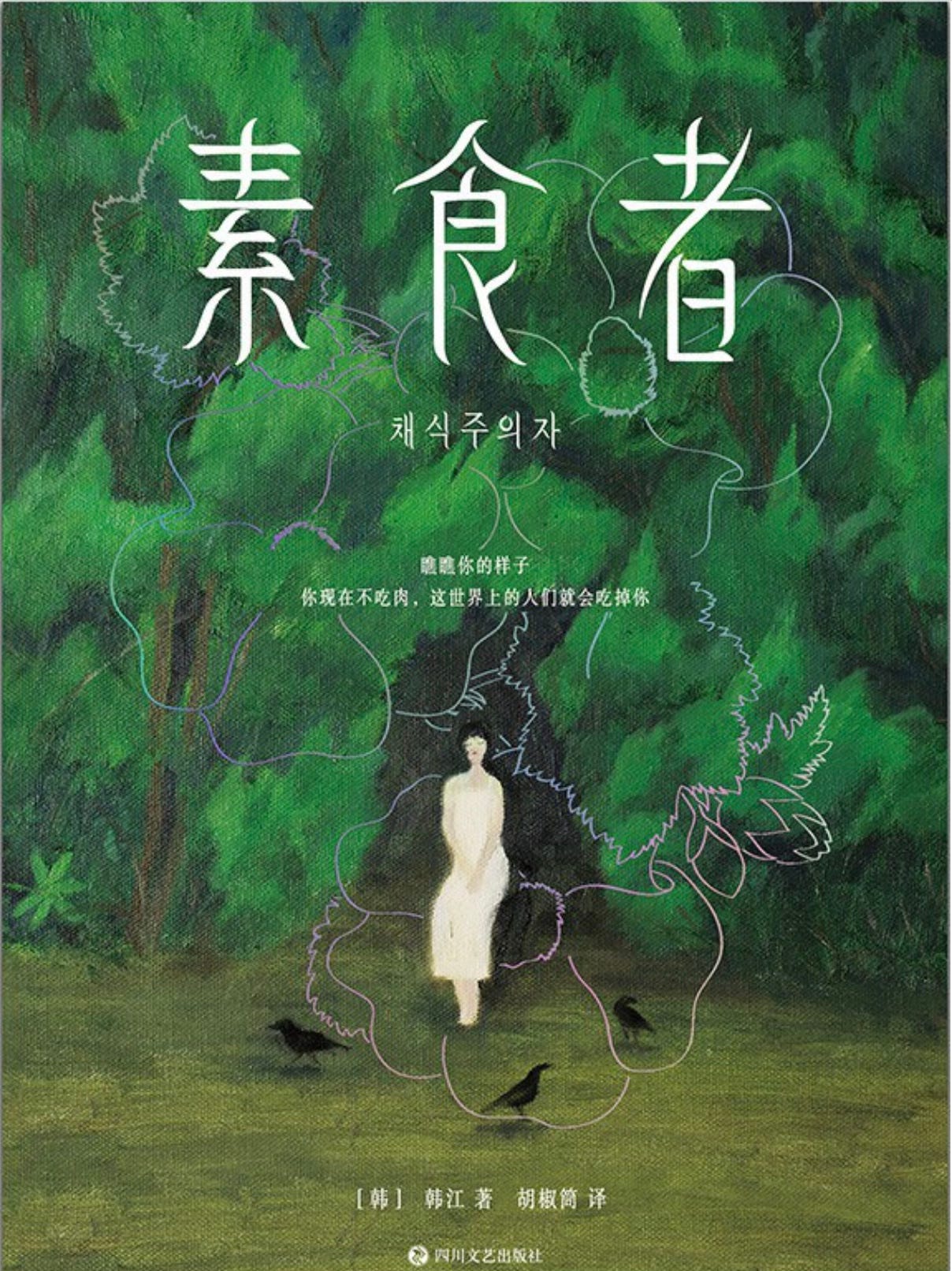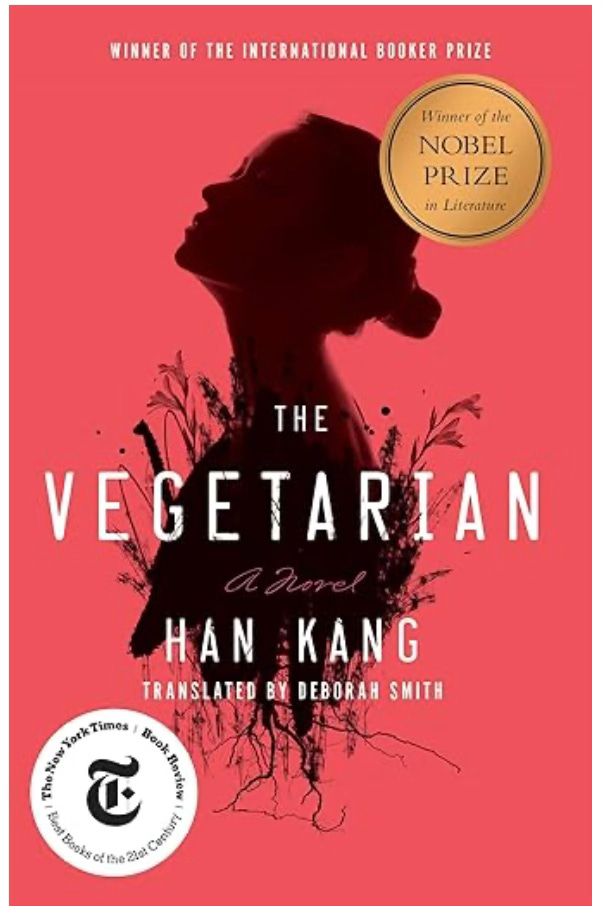编者按:今天是“世界读书日”。北京大学的日本留学生孔德湧以“历史”为题,挑选了三本文学作品来谈如何面对历史。这三部作品分别是大江健三郎所著的《广岛札记》、村上春树的《海边的卡夫卡》和韩江的《素食者》,作者認為:“大江健三郎、村上春树与韩江的文学创作,分别从普遍性理念、个体存在困境和人际共情三个维度,构筑了东亚文学对历史暴力的回应谱系。尽管风格迥异,他们的作品共同指向一个问题:我们该如何面对充满黑暗的过去历史以及其所带来的创伤?”作者希望,在“世界读书日”,“如果这篇文章能成为点亮大家的阅读生活与人生的契机,那将是我莫大的喜悦。”本文为中英文双语。
Editor's note: Today is World Book Day. Tokuyu Ko, a Japanese student studying at Peking University, selected three literary works on the theme of "History" to talk about how to face history. The three works are "Hiroshima Notes" by Kenzaburo Oe, "Kafka on the Shore" by Haruki Murakami, and "The Vegetarian" by Han kang. The author believes that “Each of these books also presents its own method of engaging with history from a different dimension. Ōe delineates a universal idea that is capable of transcending the gap between self and other; Murakami articulates the existential significance for an individual to take on their own historical responsibility; and Han Kang brings to light the irreplaceable value of providing care and healing to our loved ones, with whom we share emotional bonds.” The author hopes that on World Book Day,“ it would be my utmost pleasure if this essay could serve as an inspiration for your own reading life and even your life journey.”
This article is in Chinese and English.
当谈到“历史”,许多人可能会觉得这是一个与生活于当下的我们没有太多关联的遥远话题。许多人或许在口头承认历史的重要性,但是如果被问及它与当今社会的具体联系,恐怕有不少人难以作答。有趣的是,“世界”这个词,是由“空間(界)”与“时间(世)”组成的。置身于这个世界,意味着我们在空间与时间上同时存在。毫无疑问,现实与过去是连续的。归根结底,活于此世乃活于历史之中。
我是一位来自日本的留学生,目前在北京大学燕京学堂学习。因为日本和中国之间那段沉重的历史,自来到中国留学以来,我走访了许多地方,不断学习和反思这段过去。经过这些学习和思考,我开始重新审视:自己究竟是如何面对历史的?而这种面对方式又是如何形成的?本文接下来将提到的三本书,分别以不同的方式(但是以相对含蓄的表达方式),提供了我们面对历史的方法论。
首先我想介绍的是大江健三郎所著的《广岛札记》。正如书名所示,这部作品是诺贝尔文学奖得主大江健三郎对广岛原子弹受害者(日语称“被爆者”)及其相关运动进行采访后撰写的散文集。
对于我个人而言,本书最令人印象深刻的部分之一出现在序章。大江引用了一位被爆者写给他的信;这封信表达了对强迫被爆者发声的学者和活动家的反感。虽然这些内容并非针对大江本人,但他强烈意识到这种批判同样可以适用于他。当永远无法真正理解当事者痛苦的非当事者(如学者、活动家),试图倾听他们的声音,甚至以正义等崇高名义要求他们参与社会运动,这种行为本身就可能构成一种暴力。而大江的尝试本身,其正当性也极为脆弱。
那么,大江采取了什么样的方法呢?在他的随笔中反复出现"内心深处的广岛"(内なる広島)或者类似的表达。他主张的是:为了"恢复人性",我们必须建立"自己内心的广岛"。诚然,作为非当事者,我们即便再努力理解原子弹的惨剧,最终能得到的只不过是一种内化的、主观的认识。但这种尝试之所以有意义,正因它通向普遍的人道主义精神。
与人道主义相对的是政治性思维。诸如"投掷原子弹是为结束战争不得已而为之""战争期间发生的事情都无可避免"等论调,本质上是将原子弹的暴行作为终极的政治对立(即“战争”)中的手段来合理化。这种思维是对人类尊严的彻底侵犯,甚至贬低了发言者自身的人性。大江还提到,有一位美国记者对1964年东京奥运会选用一位在原子弹投下当天出生于广岛的青年担任火炬手感到不快。对此,大江写道:“现在,所有拥有核武器的国家,他们的领导人和他们的国民,不都想把广岛从他们的记忆中抹去吗”,甚至“这个地球上的每一个人,都在试图彻底地忘掉广岛,忘掉发生在广岛的人类浩劫”。一旦一个人真正了解了广岛人民所遭遇的惨剧,无论以何种理由正当化对此座城市的原子弹投下,最终都意味着对人类尊严的根本性否定。
总结而言,大江的方法是:既清醒认识到作为非当事者的局限性,又坚持从普遍人道主义视角来理解历史悲剧。由此建立的认知虽然只能是内在的或者主观的,但正因为它指向"人性的恢复",所以具有普遍意义。
如果说对广岛与长崎的原子弹投下了日本在二战中作为“受害者”的一面,那么,我们也必须正视其“加害者”的那一面。
关于日本战争加害问题,村上春树一直试图以一种极为隐晦、间接的方式进行反思。在其散文《弃猫》中,村上谈到了自己父亲曾参与中日战争的经历。他提及父亲讲述过战场上恶劣的环境和残酷的景象,但同时也表示,自己并未听到太多细节。不过,即便是为数不多的谈及,这段经历似乎仍深深刻印在了父亲的记忆里,也印在了村上本人心中。事实上,在他1994年发表的《奇鸟行状录》中,描写了战争中的残酷情节,而在近年来出版的《刺杀骑士团长》中也有对南京大屠杀的直接提及。
在这里,我想特别介绍的是他于2002年发表的小说《海边的卡夫卡》。这部作品的主角是一个15岁的少年。他成长于单亲家庭,与父亲关系不睦,最终选择离家出走。他在离家之际立下决心,要成为“世界上最坚强的15岁少年”。他被父亲施加了“俄狄浦斯式的诅咒”,即他终将弑父,并与自己的母亲与姐姐发生性关系。故事的结局在此不谈,但是整个故事好像尝试告诉我们,为了成为“世界上最坚强的15岁少年”,一个人不仅要接受自身的命运,还要承担起自己行为的道德责任——即便这些行为是被命运所安排的。在充满邪恶与暴力的世界中,我们不仅会成为这些暴力的受害者,有时也可能无意中成为加害者。因此,我们必须拥有接受不合理命运的勇气,同时承担自身的道义责任。
在小说中,反复出现了W. B. 叶芝的诗句:“责任始于梦中(In dreams begin responsibilities)”。正如这句诗所言,即使在梦中,主角也在不断地对自己的行为进行伦理上的反思。小说中还引用了弗朗茨·卡夫卡的短篇小说《在流放地》中出现的行刑机器,并将其视为社会系统的隐喻。社会的复杂性,可以使我们不自不觉中卷入违背人伦的事情。
然而,如果我们的所有行为都早已被命运决定(就像俄狄浦斯一样),我们是否还需要承担责任?换句话说,对那些无法用自身意志控制的行为,我们为何要背负伦理责任?对此,小说并未给出一个明确的答案。但小说展现的是:即使是被命运安排的行为、即使是在社会体制中被迫为恶,我们也必须承担起自己的伦理责任——这正是“世界上最坚强的15岁少年”所需的品质。
接受命运,并不等于屈服。在此小说的另一条故事线中,一位在战争中失去认知能力的老人为主人公。他原本过着平静的生活,却突然遭遇一场暴力性的灾祸,之后他踏上了追溯其根源的旅程。在日常生活的平静被打破时,我们必须直面摧毁我们生活的暴力。在旅途中,一位曾经在自卫队工作的年轻人加入了老人的队伍。他坦言,自己过去只关心女人和酒等庸俗琐事。但即便如此,他也意识到,在关键时刻必须要勇敢地对抗邪恶。我认为,这正是我们现实生活的写照。
在这部作品中,战争虽然看似并非主题,但却始终作为背景存在。若我们细致解读这部小说,会发现其中蕴藏着某种面对历史的方式论。关于过去的历史,当代的我们或许并没有直接的责任(就如当代的日本人,甚至连当时(未上战场的)普通市民,都没有对日本过去战争中的加害行为有直接责任)。但若我们进行彻底的伦理反思,仍能看到某种“责任”的存在。我们不仅要清醒地认识到这一点,并在面对邪恶与暴力时坚定地反抗;这正是我们面对历史时所需要的勇气。
最后,我想介绍的是韩国的诺贝尔奖作家韩江的作品《素食者》。她的作品中有许多都触及了历史悲剧,例如描写光州事件的《少年来了》、以及讲述济州岛四三事件的《不告而别》。然而,在此我想特意选出《素食者》,这部并未直接描写这些历史悲剧的小说来谈一谈。
本作的故事围绕一位在突然开始在梦境中看到一些残忍的场景后,不再吃肉的女性。然而,故事的叙述视角并不来自于成为素食者的女性本人,而是来自于她身边的人。面对她的难以理解的行动,有的人选择抛弃她,有的人则试图认真面对她的变化。而无论是哪一边,他们都某种程度上被迫直面那些他们至今为止选择回避的现实与过去。
即便现实充满暴力与残酷,我们有时也会选择忍耐而维持当下的生活。尤其是在像韩国(以及其他东亚国家)这样父权制下的压迫存在于各个家庭甚至整个社会的文化中,这种的现象尤其常见。然而,那些靠忍耐与沉默维持的现实,终究会在时间的推移下逐渐崩解。到那时,那被撕裂所敞开的黑暗深渊,会不可抗拒地将我们吸入其中。
现实,或言世界,是多层的。在看似平静的日常之下,潜藏着被压抑的记忆与无形的结构。我们今天所处的现实,其实是建立在种种被忽视的错误(尤其是暴力)之上的积淀。在小说中,女主角曾遭父亲施暴的过去,以及家庭对这一暴力行为的视而不见也被描绘。更进一步,小说还提及她的父亲曾参与过越南战争的历史。除此之外,故事中未明确涉及的、血淋淋的过往与历史也不计其数。韩国的现代史本身就充满了悲剧:从日本的殖民统治到战后的独裁政权,再到在独裁体制下的光州事件、济州岛四三事件等。我们很容易选择对这些悲剧与暴力视而不见,但当那些伤口重新裂开时,愈合它们却是无比艰难的事情。
女主角为了逃离痛苦,最终选择尝试变成一种既不是人,也不是动物的存在。但这个选择必然朝向死亡。在这个过程中,她的姐姐试图倾听她的梦境。梦虽非现实,但与现实却密不可分,——尤其是现实的暗面,那些被压抑的暴力,总在梦中复返。她的梦,自然反映了她所遭受的暴力与苦难,也暗示着她想要从这些苦难中解脱的渴望。梦虽然看似是琐事,但是实际上是值得、也是应该被倾听的。这种倾听,自然而然让我联想起了精神治疗(therapy)。这种治疗会将内心深处累积的痛苦与悲伤一一舀起、溶解,因此需要漫长的时间与不断的努力。但是,无论如何,我们不能袖手旁观着我们亲人的痛苦。
向身边的人伸出援手、倾听他们的声音,这不仅是对他们的支持,也是对他们所背负的过去与历史的认真面对。在这一过程中,我们自身的痛苦也可能随之浮现。从这个意义上说,这是一种相互性的行为。花费漫长的时间与他人建立关系、彼此治愈伤口,这种行为本身,也与疗愈历史的创伤息息相关。在这个意义上,“面对历史”,乃是一种日常的实践。
大江健三郎、村上春树与韩江的文学创作,分别从普遍性理念、个体存在困境和人际共情三个维度,构筑了东亚文学对历史暴力的回应谱系。尽管风格迥异,他们的作品共同指向一个问题:我们该如何面对充满黑暗的过去历史以及其所带来的创伤?大江健三郎以一种普遍性的理念来审视历史与自身;村上春树的作品以深刻的方式从个人视角描绘了一个人该如何面对世界与历史,即承担自身的责任又反抗此世的邪恶;韩江则从人与人的关系角度出发,给我们提示了如何以共情的方式来面对、治愈每各个人背后或者人与人之间共有的历史性创伤。从这个意义上,这三本书分别从不同的层面告诉我们如何面对历史。大江展现了一种能够超越自我与他者之间距离的普遍理念,村上则呈现了个体对其存在意义的探求,而韩江则通过其作品展示了与心爱之人之间的情感纽带所带来的关怀与救赎的不可替代的意义。将三者联系起来,我们可以看到一个以“个体-身边-整个人类”为同心圆结构的图景。
换句话说,村上通过其作品向我们呈现了个体在接受自身命运的过程中所必须经历的道德反思与责任承担,以及为守护自身生活所需的面对邪恶的勇气;而韩江则鲜明地描绘出,在身边之人遭受苦难时,我们必须去倾听其背后所隐含的个人史、家族史,乃至于社会史中的创伤,这一过程同时也意味着要重新挖掘并直面自身的心灵深处的创伤;大江则从人道主义这一普遍理念与情怀出发,描写了理解遥远他者之苦难的意义与方法。当然,人是复杂的、多面的,但此处所说的人道主义掩护的人性,可理解为人的情感与心灵,以及以这些因素为根基的尊严(这个同样也适用于村上与韩江)。另一方面,人也具有以理性为基础、冷静地为自身利益行事的一面。当这种思维走向极端时,人就有可能无视他人的苦难,而不惜一切手段地达成某种目的。将朋友与敌人截然划分、对后者的苦难置若罔闻的政治话语,正是此类思维的体现。然而,这种思想最终只能在忽视所有人(包括持有这种想法的人)的尊严的前提上才可以成立。大江所提出的方法论,正是建立在人类情感以及由此产生的尊严之上的人道主义,其最终目标是指向全人类的人性复归。为了到达这一境界,我们需要作出“活于自我人生道路上”的存在主义式抉择(即便自己的人生命运充满暴力与邪恶),同时也需要坚持不懈地去关怀身边的人。从这个意义上来说,综览这三本作品,我们可以看出一种贯穿个体与整个人类、以人道主义为核心的面对历史的方法论。
Tokuyu Ko|Living within History: Three East Asian Literary Works that Tell Us How to Engage with History in A Meaningful Way
When it comes to history, many people might regard it as something distant and irrelevant to our present lives. Although many may express their advocacy for the importance of history, when asked how it truly relates to the present, most of them might actually find it difficult to articulate this clearly. Interestingly, the combination of Chinese characters expressing "world" (shijie 世界, or in Japanese sekai) is composed of "space" (界) and "time" (世). To be in the world means existing both spatially and temporally. There is no doubt that the present and the past are interconnected. Indeed, living in this world is nothing but living within history.
As a person from Japan, I have often reflected on history partly but significantly due to the sad past between Japan and China. Since coming to China to start my studies at Peking University, I have learned various historical facts across this country and tried to engage with them. In doing so, I have also reconsidered how I personally confront history and how my approaches have been shaped. Each of the three books I will introduce in this essay exhibits a different methodology for engaging with history, albeit in an obscure and implicit manner.
The first work I would like to introduce is Hiroshima Notes by ŌE Kenzaburō. As the title suggests, this is a collection of essays written by this Japanese Nobel laureate about his reflections and reportage on the atomic bomb survivors (hibakusya 被爆者) in Hiroshima and the movements surrounding them.
One of the most striking parts of the book for me is in its prologue. Ōe introduces a letter he received from a hibakusha, who expresses resentment toward intellectuals who ask survivors to speak out. While the letter is not directed at Ōe himself, he fully recognises that it could go against himself. When someone who has not directly experienced the suffering, namely an outsider, tries to address those who have, or even urges them to be involved in some movement in the name of justice or other seemingly noble ideals, it can become a violently intrusive act. Ōe was acutely aware that his own attempt, too, stood on fragile moral ground.
Then, what kind of approach did Ōe take given this concern? A recurring phrase in his essays is “a Hiroshima within oneself” or “an inner Hiroshima” (内なる広島) or other similar expressions. He claims that, in order to restore humanity, we must cultivate this inner image of Hiroshima. Of course, since we did not physically experience the horrors of the atomic bombing, any understanding we attain will inevitably remain internal and subjective. And yet, that effort can be meaningful if they are connected to humanism as a universal idea. What’s opposed to this humanism is politics. Statements such as “the bombings were necessary to end the war” or “it was inevitable in wartime” are political discourses that seek to justify the atomic bomb as a strategic means in war as the ultimate political conflict. Such reasoning ends up disregarding the very humanity of even the one who states so.
Ōe also recounts an incident where an American journalist criticised the choice of a young man born in Hiroshima on the day of the bombing as a torchbearer in the 1964 Tokyo Olympics, calling it distasteful. In response, Ōe writes: “Do not all leaders and peoples who at present possess nuclear weapons also wish to erase Hiroshima from their memories?”, and even “people everywhere on this earth are trying to forget Hiroshima and the unspeakable tragedy perpetrated there”. Indeed, when one truly understands the atrocity that befell the people of Hiroshima, there is no way to justify it without negating the dignity of all humankind.
Ōe’s approach can be summarised as striving to comprehend historical tragedies through the lens of universal humanism, while being fully aware of the limits of one’s understanding as an outsider. What one can attain in doing so may merely be something internal or subjective, yet it carries universal significance since it leads to the restoration of our shared humanity.
If the atomic bombings of Hiroshima and Nagasaki represent Japan’s experience as a victim in the last war, then we must also shed light on Japan’s role as an aggressor.
MURAKAMI Haruki has attempted to confront Japan’s wartime aggression not in direct or overt ways, but rather through a subtle and indirect approach. In his essay Abandoning a Cat, Murakami mentions his father’s experience as a soldier in the Second Sino-Japanese War. While he does touch on the horrific conditions and brutal scenes in the battlefield his father witnessed, he also admits that he could not hear much from him. Nevertheless, even with only a few mentions, we can see that they left an indelible mark on both his father’s and his own memory. In fact, his novel The Wind-Up Bird Chronicle includes stark portrayals of atrocities that happened in wartime, and in his recent work Killing Commendatore, there is a reference to the Nanjing Massacre.
Here, I would like to pick his novel Kafka on the Shore. The protagonist is a 15-year-old boy who runs away from home partly owing to the troubled relationship with his father. Before leaving, he resolves to become “the toughest 15-year-old in the world”. His father has placed an Oedipal-style curse on him, claiming that he will someday kill his own father and sleep with his mother and sister. Putting aside how he ended up in the actual story, to become the toughest 15-year-old in the world means not only accepting one’s fate, but also taking moral responsibility for one’s own actions, even if they are destined.
In a world filled with evil and violence, we are not only subject to suffering imposed by others, but we may also commit them ourselves. We must, therefore, bear both the injustice inflicted upon us and the responsibility for our own immorality. Throughout the novel, the line “In dreams begin responsibilities” from a poem by W. B. Yeats appears multiple times. Even in his dreams, the protagonist strives to reflect on the moral responsibility of his actions. The symbolic execution machine in Franz Kafka’s novella In the Penal Colony was also mentioned as a metaphor for social systems; in a complex society, we may find ourselves unknowingly involved in wrongdoings. But if all our actions are predetermined, like in the case of Oedipus, can we still be held morally accountable? Why should we be ethically responsible for things beyond our control? The novel offers no clear answer to this question. Still, it suggests that taking responsibility, even when one’s actions are shaped by fate or systems beyond one’s control, is what is required to become “the toughest 15-year-old”.
Accepting one’s fate does not mean giving up without resistance. The novel includes a parallel storyline featuring an elderly man who lost his intellectual faculties due to an incident during the war. His peaceful life was upended by an inexplicable act of violence, which prompts him to embark on a journey to trace its roots. Along the way, he is joined by a young ordinary man, who formerly served in Japan’s Self-Defense Force and whose mind is largely preoccupied with coarse pleasures like women and alcohol. Yet, at a crucial moment, this young man comes to realise the importance of confronting evil squarely. Indeed, it happens to our lives as well.
While war does not look like the central theme in Kafka on the Shore, it nonetheless serves as the essential backdrop. If we read the story closely, we can see that it proposes a certain method of engaging with history. As for past history, we today may not bear direct responsibility—just as Japanese people today, and even civilians who never saw the battlefield at the time, may not be directly responsible for Japan’s wartime atrocities. Yet, through ethical reflection, a form of responsibility can be somewhat conceptualised. Fully aware of this, we must also summon the courage to confront evil and violence when necessary. That, indeed, is the kind of valour required to truly face history.
Lastly, I would like to introduce The Vegetarian by HAN Kang, a South Korean writer and Nobel Prize laureate. Han’s works often deal with historical tragedies; for instance, Human Acts addresses the Gwangju Uprising, while No Goodbye does the Jeju April 3 Incident. Here, I would like to pick, however, The Vegetarian, which does not deal with such events directly, with some intention.
The novel is about a woman who suddenly begins to see cruel images in her dreams and becomes unable to eat meat. The story unfolds not from her perspective, but from those around her. Some abandon her, while others stay by her side. Yet, all are ultimately confronted by the realities and pasts they had long turned away from.
Even if drenched in violence and cruelty, people often endure such a reality and keep on living. This is especially true in patriarchal cultures like South Korea (and other East Asian countries), where repression is prevalent from the family to society. However, the seemingly stable reality sustained by silence and endurance will eventually be shattered by the flow of time. When it occurs, we are inevitably drawn into the deep, dark abyss opened up by it.
Reality—or the world—is multilayered, indeed. Beneath the surface of seemingly tranquil everyday life lie buried memories and invisible structures. The reality we inhabit is built upon the accumulation of overlooked mistakes, particularly violence. In The Vegetarian, there are references to the violence the protagonist suffered from her father, the fact that her family has overlooked it, and her father’s experience in the Vietnam War behind it. For sure, there are also countless unmentioned bloodstained histories. Indeed, South Korea’s modern history itself is filled with tragedies: from Japanese colonial rule to post-war dictatorships, and the atrocities that occurred under them (e.g. the Gwangju and Jeju massacres). It is easy to turn a blind eye to such violence and tragedy. But when long-suppressed wounds reopen, healing becomes an extraordinarily difficult but desperately required mission.
The protagonist, in her suffering, gradually seeks to become something that is neither human nor animal; yet it inevitably leads her toward death. In such circumstances, her sister begins to tune into her dreams. Despite not being reality, dreams are deeply entwined with it; especially its darker aspects such as the suppressed memories of violence she has experienced recur in her dreams. Her dreams clearly reflect the violence she has endured, the suffering she has witnessed, and her desire to be liberated from those pains. Undoubtedly, even seemingly trivial things like dreams need to be heard by someone. In that sense, the act of listening is, and should always be, therapeutic. To unearth and console the grief and pain buried deep within the heart requires a painstakingly long time and persistent effort. Still, when someone precious is heading towards death, we cannot simply sit by and watch.
To reach out and listen to your beloved one is, at its core, to confront the past and history they carry. In doing so, our own pain often begins to surface as well. In that sense, it is reciprocal; in other words, forming bonds with others and healing each other’s wounds over time are also a way to cure the scars of history. Thus, engaging with history is an everyday practice, indeed.
The three books discussed in this article have completely different styles. Ōe reflects on history based on universal ideals; in contrast, Murakami portrays the process of confronting history, specifically taking personal responsibility and resisting evil, from an individual perspective; Han Kang, meanwhile, explores how we can empathetically engage with the traumas rooted in history, whether it is an individual one or shared by several persons, through the lens of interpersonal relationships.
Each of these books also presents its own method of engaging with history from a different dimension. Ōe delineates a universal idea that is capable of transcending the gap between self and other; Murakami articulates the existential significance for an individual to take on their own historical responsibility; and Han Kang brings to light the irreplaceable value of providing care and healing to our loved ones, with whom we share emotional bonds. If we put them together, we can find these three approaches form a concentric structure: individual – people around us – the whole humanity.
At the individual level, Murakami depicts the moral introspection and undertaking of responsibility required to embrace one’s fate, as well as the courage to stand up to evil to protect one’s everyday life; Han Kang, on the other hand, illustrates the need to listen closely to and face the traumas rooted in personal, familial, and social history, especially when someone close is suffering, in a profound manner. At the same time, her work also reveals that this process, in most cases, requires us to unearth and face our own hidden wounds. Ōe discusses the value and method of understanding the pain of distant others, grounding his reflections in humanism as a universal ideal and sentiment. While humankind is a complicated species and has multiple aspects, it is almost beyond dispute that, in his work, humanity is related to human emotion and the dignity that arises from it (this, of course, applies to Murakami and Han Kang as well). At the same time, humans also have a rational side, which enables us to pursue our self-interest in a coldhearted and ruthless way; if such thinking is taken to the extreme, we come to ignore the suffering of others completely in pursuit of certain goals. Political discourses that distinguish between friend and foe, and disregard the pain of the latter, fall into this category. Yet such values can only be sustained by ultimately denying the dignity of every human being – including those who hold it. Ōe’s methodology, rooted in a humanism that places human emotion and dignity above all else, ultimately aims for the restoration of humanity as a whole. In order to have such a mindset, we should begin by making an existentialist choice to live our own life — no matter how destined it may be to brim with violence and evil — and by holding a persistent attitude of deep care for those close to us. In this sense, through these three books, we can find a comprehensively humanistic approach to engaging with history—one that runs through the individual, people around us, and humanity as a whole.
Looking back, I realise that I learned not only how to face history through these books, but also how to read, and perhaps even how to live. By tracing the methodologies I have acquired through these readings, I have, in effect, traced my own history.









